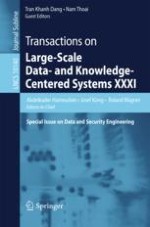The LNCS journal Transactions on Large-Scale Data- and Knowledge-Centered Systems focuses on data management, knowledge discovery, and knowledge processing, which are core and hot topics in computer science. Since the 1990s, the Internet has become the main driving force behind application development in all domains. An increase in the demand for resource sharing across different sites connected through networks has led to an evolution of data- and knowledge-management systems from centralized systems to decentralized systems enabling large-scale distributed applications providing high scalability. Current decentralized systems still focus on data and knowledge as their main resource. Feasibility of these systems relies basically on P2P (peer-to-peer) techniques and the support of agent systems with scaling and decentralized control. Synergy between grids, P2P systems, and agent technologies is the key to data- and knowledge-centered systems in large-scale environments.
This, the 31st issue of Transactions on Large-Scale Data- and Knowledge-Centered Systems, contains six revised selected papers from the 2nd International Conference on Future Data and Security Engineering, FDSE 2015, and the 9th International Conference on Advanced Computing and Applications, ACOMP 2015, which were held in Ho Chi Minh City, Vietnam, in November 2015. Topics covered include big data analytics, data models and languages, security and privacy, complex business services, and cloud data management.
